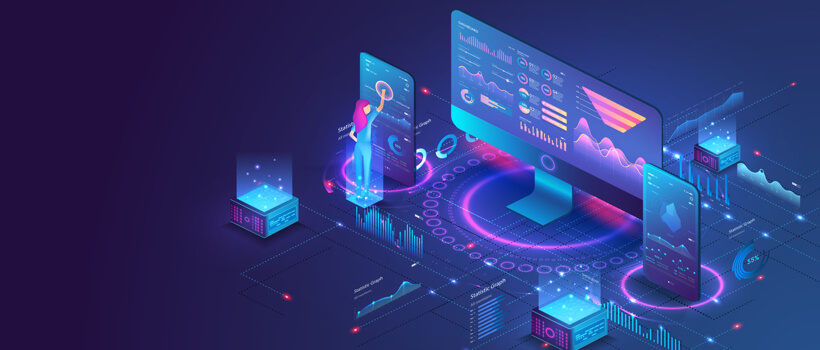 1-800-805-5783
1-800-805-5783 
Artificial Intelligence and Machine Learning are the technologies that have taken the world by storm. The current AI and ML market is valued at 58.30 US billion dollars and is expected to reach 309.6 US billion dollars by 2026 at a CAGR of 39.70%. Let us first understand what these technologies are? While Artificial Intelligence is a concept that can stimulate human thinking and behavior, Machine Learning is a subset of it that is used to create algorithms from past cases. Currently, there is not a single sector in the market that does not make use of these technologies for a better competitive advantage. They are transforming business processes and making operations smooth. Many business leaders around the world are incorporating these technologies in order to align with employee interests and organizational goals. Their significance rapidly peaked in the year 2020-21 and is only expected to grow. Following are the top applications that we can expect to see in the near future:
In many industries, AI is already used to streamline data, images along with language processing. In the future, we can expect that AI will be extremely popular in making new visual designs from a small text description.
Novel work can be created from past data. With this algorithm, AI will be venturing into creative industries and we will be soon seeing large-scale implementations of it.
Microcontrollers are the keywords when it comes to TinyML. They can shrink deep learning networks to fit on any small hardware system. This has a big utility when it comes to hardware-restrained machines like cars, refrigerators, and other utility meters. What is even better is that these new embedded machine frameworks are enabling the highly powered AI-IoT devices into existence. Soon new approaches for their management and security will be capturing the market.
Ever thought, what do you get when you mix Quantum computing with Machine Learning? An interdisciplinary area is known as Quantum ML. It allows technicians to take a classic ML algorithm and apply it to a quantum circuit so that it can effectively run on a quantum computer. Quantum computers have a very high computational power to solve taxing problems in really less time. Because of this feature, many applications like space exploration, understanding of nanoparticles, molecular modeling of new drugs and researches, complex pattern recognition, understanding the deep makeup of the human body, and so on, are possible.
Responsible AI is a new term coined for a governance framework that is meant for a specific organization to address challenges related to AI from an ethical and legal point of view. Since this model works on the data collected and used, it is also able to frame accountability in case of a negative outcome. The aim is to promote interpretability and fairness. Given the current development of GDPR and other safety concerning laws, Responsible AI has multifunctional applications. It will not only differ as per the laws in each country but also as per each organization.

This is a new innovation that is transitioning from the early adopters of the industries to a technology used in all business sectors. Based on the predictive analytics as to the backend along with AI algorithms, the automation resulting from this mix is used to provide valuable insights. Work environments with complex workflows and tasks have the most potential for AI-powered automation. Decide, discover, act and optimize are the elements that drive this technology further. Automation is no longer used for simple tasks but to optimize the entire organization’s systems. This has been found to significantly reduce cost and increase efficiency. Intelligent automation which is Robotic Process Automation combined with Artificial Intelligence is the next step in the ladder. It uses cognitive bots for empowering business process automation and accelerating digital transformation.
Through the democratization of AI and ML, organizations are attempting to make them accessible to all. For non-technical people, AI tools are being developed in a visual drag and drop, workflow-driven fashion. Since the AI and ML structures require a complex framework for proper implementation, AutoML and end-to-end automation is applied for true no-code functionality. By identifying high-impact use-cases, building trust, initiating transformation, and fostering people’s understanding of embracing new technologies, only can an organization hope to achieve onboarding for all on AI/ML high wave. AI-based feature engineering backed with ML operationalization will be critical in bringing this democratization to reality.
Machine learning and Artificial Intelligence are powerful tools and paved the way for the need for more data scientists in the world. Since they are the crucial backbone technologies behind every innovation that ranges from simple chatbots to highly automated robots that monitor supply chains, they have a high demand even as a learning resource in the market. This field is continuously growing and developing with new forefronts in research. Smart cities, IoT devices, drones, and cloud computing applications operate on the implementation of AI/ML. In the fields of banking and finance, they were already used to detect frauds, but now even those levels are enhancing. It will always be a good endeavor to educate oneself on these technologies as the more time flows, the more they will be a part of our day-to-day lives.
Tags: AI, artificial Intelligence, machine learning, ML